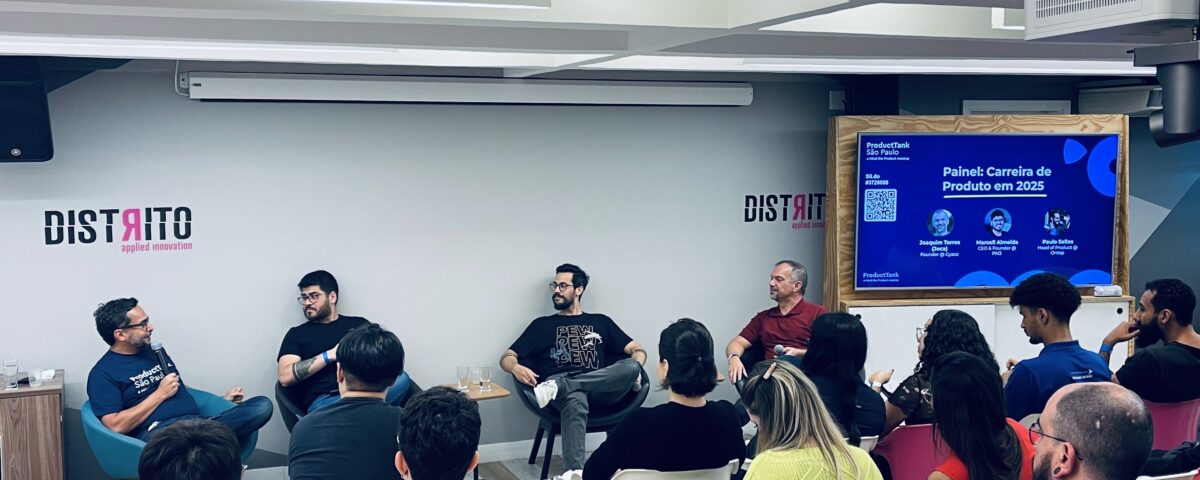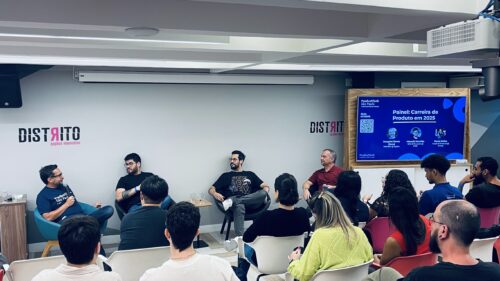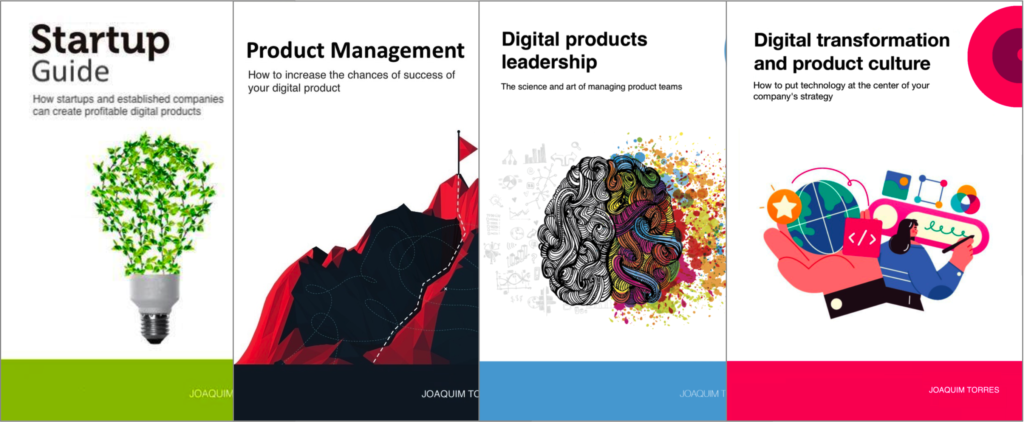
Tools
2 de October, 2024
Value or experience: where to focus to increase the chances of success?
12 de October, 2024Last week I had the pleasure of participating in the October Product Tank SP meetup at the invitation of Leonardo Pabon, who, together with Eric Nogare and Marcelo Missagia, organizes the São Paulo version of these meetings that take place in more than 200 cities around the world. Product Tanks are informal meetings created by Mind the Product to bring together local product people and allow speakers to share incredible insights about products.
Marcell Almeida from PM3, Paulo Sellos from Ontop, and I attended the October version. Instead of talks, we had a round table led by Leonardo.
The theme was “What will the Product Career be like in 2025?” The last question that closed the meeting was “What can we expect from the PM role in 2025?”
What can we expect from the PM role in 2025?
What has always been expected, but it seems that we are only now realizing it: generating results.
Recalling the definition of product management:
Product management is solving the client’s problem with technology, generating results for the company.
This last part, generating results for the company, is essential.
Every employee must generate results for the company. Note that results are not necessarily revenue.
Once, a product manager who heard me give a talk where I talked about delivering results and gave the example of Lopes came to speak to me right after the talk and told me that she worked at an NGO and that, therefore, revenue was not the focus. I asked her what results the NGO was looking for, and she replied that it was dedicated to improving the quality of public education in Brazil. This is the result to be measured: how many teachers and students were impacted, whether these numbers are growing, and whether those impacted performed better than those not.
It is not enough to simply solve the client’s problem through technology. This is only part of the equation. If we only do this, we are doing our job incompletely, and consequently, there is a high chance that our role will be considered unnecessary. We need to solve the client’s problem through technology, generating results for the company. We need to understand how the company works and what it expects to achieve in terms of results. This means understanding what the company’s business is.
At Dialdata, the startup I founded in the 90s, one of Brazil’s first internet providers, the business was data telecommunications. I ended up having to understand this regulation. Then, I went to Locaweb, which focused on website hosting and, later on, infrastructure for virtual stores, email marketing tools, cloud infrastructure, and virtual PBX. I had to learn about these different types of business to generate results for the company somehow. At Conta Azul, the topic was accounting. At Gympass, there were two new topics: corporate benefits and gym management, which I was only familiar with as a user. When I went to Lopes, I discovered that the real estate world is much more complex than we realize when we buy, sell, or rent a house.
Without understanding how the business works and its purpose, we will not be able to generate results for the company. That is why I say that what is expected of the PM’s role in 2025 is what has always been expected of this role since its creation: to generate results.
Workshops, coaching, and advisory services
I’ve been helping companies and their leaders (CPOs, heads of product, CTOs, CEOs, tech founders, and heads of digital transformation) bridge the gap between business and technology through workshops, coaching, and advisory services on product management and digital transformation.
Digital Product Management Books
Do you work with digital products? Do you want to know more about managing a digital product to increase its chances of success, solve its user’s problems, and achieve the company objectives? Check out my Digital Product Management books, where I share what I learned during my 30+ years of experience in creating and managing digital products:
- Digital transformation and product culture: How to put technology at the center of your company’s strategy
- Leading Product Development: The art and science of managing product teams
- Product Management: How to increase the chances of success of your digital product
- Startup Guide: How startups and established companies can create profitable digital products



